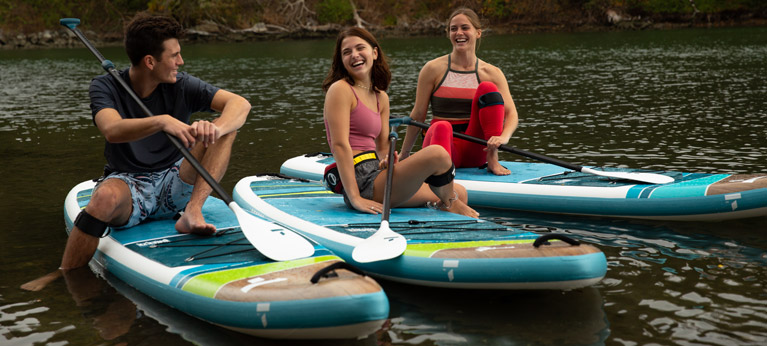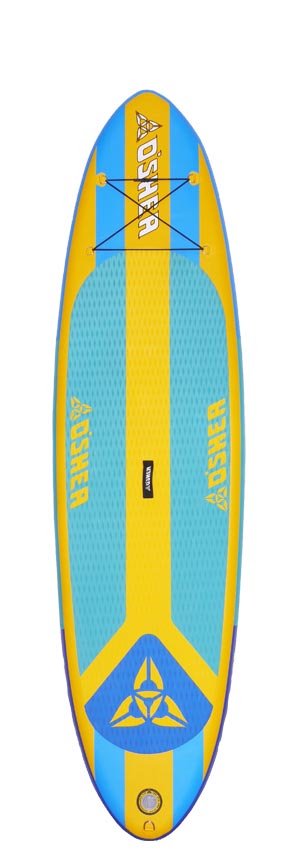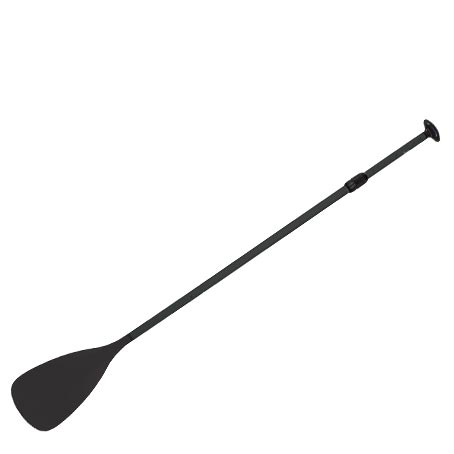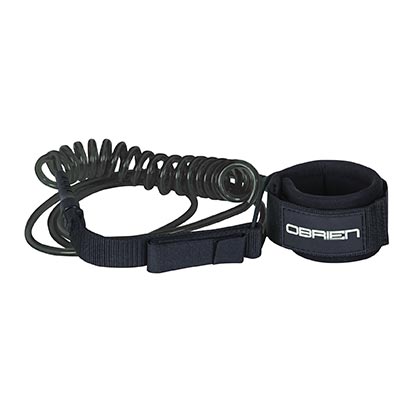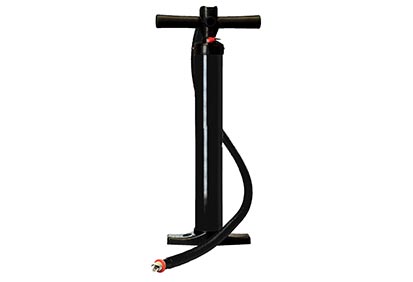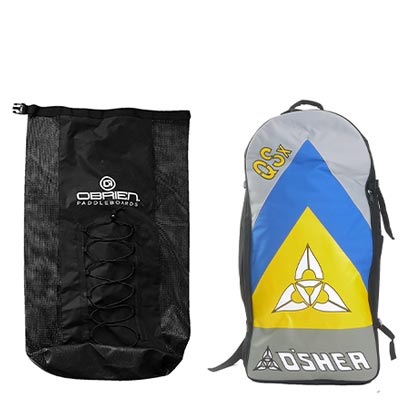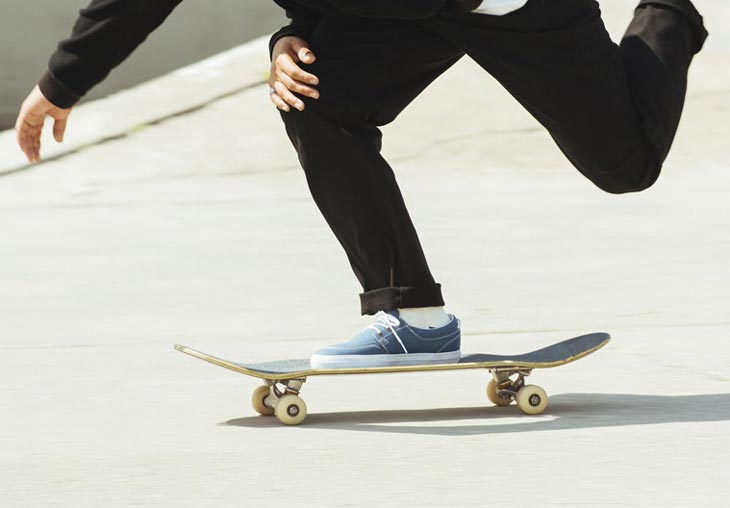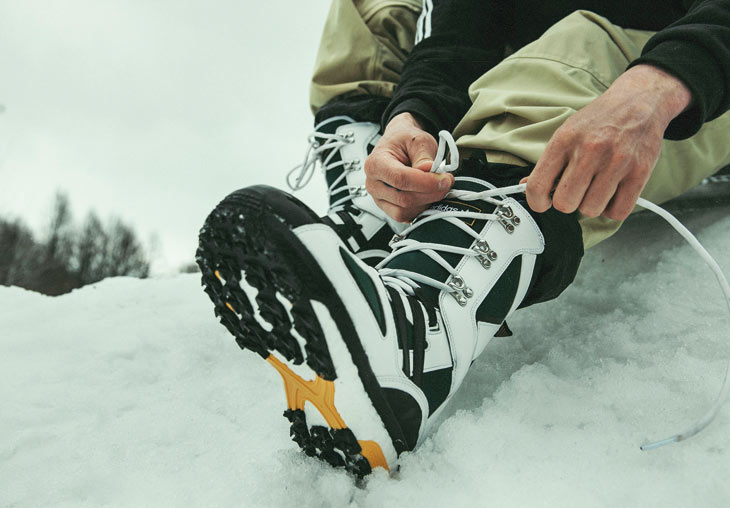SUP Buying Guide
How To Choose A Paddleboard
Whether you’re looking for a fun beach activity or a new outdoor adventure, stand-up paddleboarding is a versatile sport that offers something for everyone. SUP improves your balance and core strength, which means that it is also an ideal form of complementary exercise for snowboarding and other board sports.
Navigating the world of paddleboards can be an overwhelming task, especially for first-timers, but we can help you narrow down the options. Our handy buying guide explains everything you need to know about different types of paddleboards so that you can find the one that best suits your needs.
Inflatable stand-up paddleboards are a lightweight and easily portable alternative to hard paddleboards.
Construction
Inflatable paddleboard manufacturers utilise military-grade PVC plastic and a drop-stitch air core to create a surprisingly rigid and extremely durable construction.
The purpose of the drop-stitch core is to maintain the desired shape of a fully inflated paddleboard by holding the top and bottom layers together. Without the connecting threads, the board would curve outward and not stay flat.
The PVC outers vary from single-layer constructions to multi-layer designs depending on the manufacturer. Generally speaking, the more layers there are around the air core, the more durable the paddleboard is, but it can also increase the weight of the board.
Some inflatable paddleboard constructions also feature additional PVC stringers for increased stiffness.
TAHE's SUP-AIR construction
Advantages of inflatable paddleboards
Durability - Inflatable paddleboards utilise military-grade materials that make them highly durable and puncture-resistant. If you bump into rocks or accidentally drop your board while carrying it, inflatables will not scratch or ding as easily as hard boards. If you do somehow damage your inflatable SUP, it is also usually easy and cheap to fix.
Lightweight - The lightweight construction of inflatable boards ensures that they are portable and less effort to move around.
Travel friendly - Traveling with an inflatable paddleboard is a breeze thanks to its collapsible nature. Whether you're driving or catching a plane, bringing your iSUP is cost-effective and hassle-free.
Storage - Deflated iSUPs don’t take up a lot of room, making them ideal for anyone with limited storage space.
Deck Pad & Tail Kick Pad
Deck pads come in a variety of shapes and sizes, usually covering just over half of the board. Made from a grippy and soft foam, the purpose of the pad is to provide slip resistance and cushioning.
Some paddleboards have a separate tail kick pad with a slightly different surface compared to the rest of the deck pad. It’s an effective way to make the paddler aware that they are standing close to the tail.
Bungees
Different boards have different bungee formations, but the purpose is the same: to hold your gear in place and stop it from falling in the water. Usually, the bungees are near the nose of the board, but sometimes you will also find additional attachments by the tail.
D-rings
These are little attachment points for your leash, bungees, and other gear. The rings are also useful for towing.
Carry Handle
All paddleboards have at least one carry handle, which often sits in the middle of the board on top of the deck pad. It allows you to easily transport your board to and from the water without damaging it. The middle carry handle also often marks the perfect spot to stand while paddling if you place your feet at hip-width on each side of the handle.
Some boards have additional handles that help you break surface tension when lifting the board from the water.
Inflation Valve
Every inflatable board will have a pump attachment.
Rails/Sidewalls
Rails, also known as sidewalls, form the edges of an inflatable paddleboard. Durability is a top priority when building SUP rails because they hold the board together and endure various bumps and dings. Manufacturers can also increase the rigidity of their inflatable SUPS by adding a stiffening layer to the sidewall construction.
Fins
All paddleboards come with at least one fin, which allows you to track straight on the water. Sometimes instead of a single fin, you have a formation of two or even three for increased stability and easier tracking in windy conditions. Fins come in a variety of sizes: smaller fins provide better manoeuvrability, whereas larger fins help the board track straighter. Sometimes brands choose to feature two fins of the same size simply because it helps balance the board on the shore while you load it up with your gear.
Inflatable SUPs generally utilise flexible rubber fins, which in some cases are removable but often come permanently attached to the board. Detachable fins offer a little more freedom as you can swap them out for different sizes or remove them for storage.
All Round Shape
Inflatable paddleboards in the all round category are versatile and suitable for riders of all experience levels. Designed to perform well in various conditions, all-round boards are ideal for recreational paddling on rivers and lakes as well as oceans.
The all round shape includes a wide deck and a rounded nose, delivering a stable and forgiving ride. All round boards are not as fast as touring models, but they are easier to manoeuvre, and, therefore, the better option for beginners. The spacious deck is also ideal for doing SUP yoga and carrying passengers.
Touring/Adventure Shape
The touring and adventure orientated shape focuses on efficiency and speed. Designed to track straight and glide smoothly with fewer strokes, touring boards are ideal for covering long distances.
The characteristics of touring paddleboards include a narrow deck and a pointed nose. They are less stable on the water than all round boards, but much faster. Because touring boards are more difficult to balance, they are best suited for experienced paddlers.
Image source: O'SHEA
Shape plays a huge part in the iSUP selection process, but it is equally important to understand how length, width, and volume affect the performance of the board. When you're deciding what size to go for, the main two things you want to keep in mind are your skill level and what type of paddling you intend to do.
Paddleboard length and width
The length of a paddleboard affects speed and manoeuvrability. Shorter boards are more agile and easier to turn, but longer boards can be more efficient when you want to move fast in a straight line. Therefore, most all round boards range between 9 and 11 ft long, whereas touring orientated boards can be 12 ft or longer.
Width plays a key role in determining the stability of a paddleboard. Although narrower boards may not be the most stable and beginner-friendly option, they move more efficiently on the water. Wider boards offer more versatility and perform well in most weather conditions.
Rider weight limits
Most inflatable SUPs have a recommended rider weight limit to ensure that the board has enough volume and buoyancy to stay afloat. If the board sits too low in the water, the increased drag makes it inefficient and difficult to paddle. The higher the volume of the board, the heavier loads it can carry. Make sure to check individual product pages to find out the rider weight limits for each board.
Image source: O'SHEA
To make life a little bit easier for you, all of our inflatable paddleboards come in a package that includes most of the essentials you will need to get started. Make sure to read the product descriptions carefully to find out what items your package includes and what you may have to purchase separately.
The below accessories are some of the key items you will need for safe and efficient paddling and SUP maintenance.
Paddle
You wouldn’t get far on your brand new paddleboard without one of these, but there's no need to worry because all of our SUP packages include an adjustable paddle that is easy to store with your board.
The three main components of a SUP paddle are the handle, the shaft, and the blade. Shaft materials affect the performance of the entire paddle. Lighter materials such as carbon deliver maximum power in the stroke, making them ideal for longer paddles with minimal fatigue, whereas heavier materials such as aluminium are better suited for recreational paddling.
Leash
A leash is arguably the most important piece of SUP safety equipment. It ensures that your board doesn't float away and leave you stranded if you happen to fall in the water.
There are two different types of leashes, coiled and straight. A coiled leash doesn’t trail in the water while you paddle and keeps you closer to your board when you fall. That makes them ideal for flat water, where there is a low chance of the board bouncing back towards you. Straight leashes keep you far away from your board when you fall, lowering the chance of your board hitting you if you get caught in a wave. However, straight leashes can tangle easily, and they drag along in the water, which adds resistance.
Storage Bag & Backpack Carrier
All of our iSUP packages come with either a durable storage bag or a backpack carrier. These are ideal for storing and transporting your deflated paddleboard as they provide excellent protection against punctures and scuffs. The backpacks carriers come in handy if you have to walk with your board to get to the beach.


